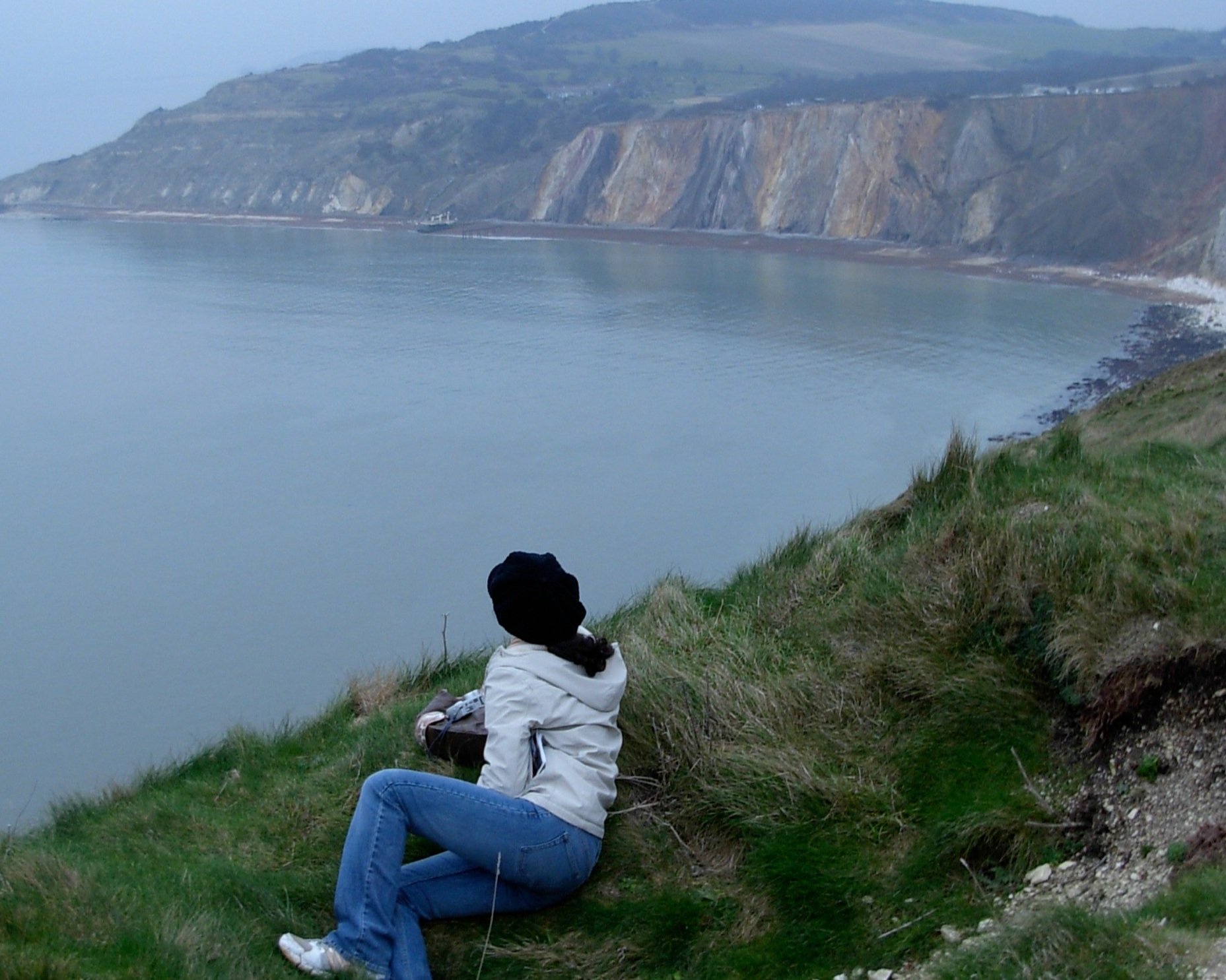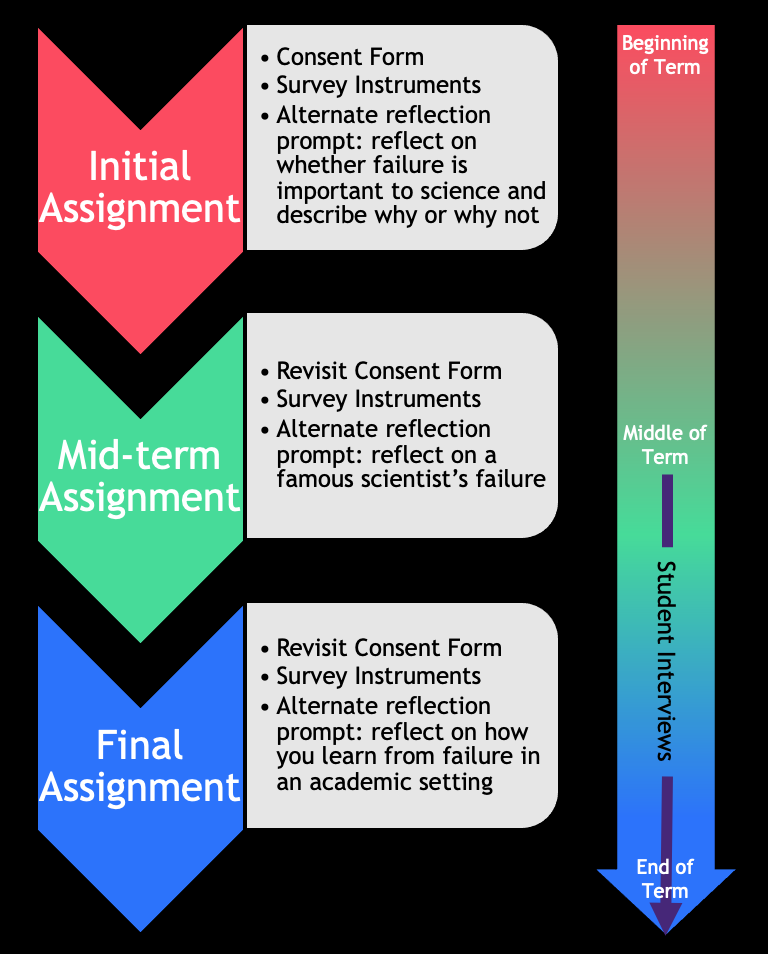Our Data Collection Process
How it worked
Our aims required that we be able to bring our questions to students across many scientific disciplines, who attended different types of institutions, across different states. This meant that we needed to have CURE instructors on board with this research, as they are the ones who know their curriculum and their students best. We were excited to see that the instructors who chose to participate were as excited about our research as we were, and that they too believed in the value of failure in science.. Which is why we asked for instructors’ permission to survey students in their CUREs.
Instructors shared our surveys with students at specific timepoints during the course. These were placed as assignments on the e-learning platform for our participating instructors’ courses.
We created the templates for instructors to paste onto their platforms, even including a video of our research team explaining the study for students to watch.
That’s it!
For the sake of collecting an adequate amount of data in every course, we asked instructors to provide students some course incentive (extra credit anyone?) for engaging in data collection. To be fair to all students, if students are under 18 or did not want to participate in data collection, we also provided an alternative reflection prompt that students could complete for that same incentive.
FAQs
-
The kind of engagement we saw with students was as follows:
5 minutes of class time at the beginning of the course to introduce students to the project (we had a recruitment script for any participating instructor to read) - or a video that instructors can put on their e-learning platform
3 surveys (20 minutes each) that students generally completed outside of class time over the course of the semester at these times:
Early in the semester
Around the middle of the semester - or after instructors decided that students had multiple opportunities to experience failure
At the end of the semester
1 hour-long interview with the students - outside of class time, for which students received monetary compensation
The kind of engagement we saw with instructors was as follows:
15 minutes of time to talk about the logistics of the research project (such as incentives for student survey participation)
About an hour of time in total during data collection for communicating with us and putting the template text onto course e-learning platforms, for which we provided a $50 Visa gift card to participating instructors
-
All participating instructors had access to a folder with the assignment prompts and links that could be cut and paste onto their institution’s e-learning platform. The instructors then ensured that the extra credit assignment was open to students at the appropriate time points in the term.
-
In order to protect student identity, we did not share individual student responses with instructors. The research team will be providing summary data from participating instructors' courses in Fall 2024.
-
The first thing that students saw when they clicked on the link on their e-learning platform was a consent form. If students decided not to participate in data collection, they were redirected to an alternate option: a short essay prompt asking them to reflect on scientific failures and on their learning in the CURE course. Students could complete this to still get any credit that instructors choose offer for engaging in this activity!
-
While we cannot promise that every student will get any direct benefit from participating in either the data collection survey or the alternate reflection essay, in interviews and feedback from piloting these instruments, students have mentioned some personal benefits. These included becoming more reflective, seeing their failures in a new light, and thinking more deeply about their coping strategies. In what was the kindest compliment of our work, students mentioned that the interviews were a welcome therapeutic exercise, offering emotional and intellectual catharsis!
Once we share our research summaries with instructors, we’ll share a few insights from our work here!


